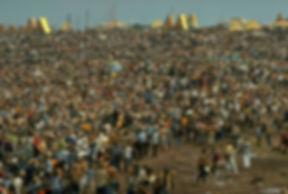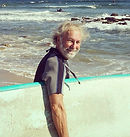
I turned 18 on May 5, 1968. On that day, there was a free concert at the Central Park band shell featuring the Dead, the Airplane, and the Butterfield Blues band. I wish I'd gone, but the truth is I didn't even know about it. I'd been busted a few weeks before and was due in court soon. Guess I had other things on my mind. Here’s a somewhat amusing account of the day from The New York Times (Note, the accompanying photo appears to be of the Dead looking out at the crowd of 6,000. Since the seat at the drum kit is empty, would anyone know if that's Hart in front of it, partly obscured by a cymbal?):
May 5, 1968: Central Park, New York City 6,000 IN PARK ROCK TO WEST COAST SOUND It was a beautiful day in Central Park yesterday for lollipops, dogs, pretty girls, wisteria, and hard rock. The rock was provided for free by three of the currently best-known groups on the rock 'n' roll scene - the Paul Butterfield Blues Band, the Jefferson Airplane, and the Grateful Dead. The area's normal Sunday denizens - pretty girls in their slimmest pants suits walking dogs in hopes of meeting the lawyers and advertising men in their weekend Nehru jackets and turtlenecks - were all but swamped in the horde of young people who flocked to the concert. About six thousand, the police estimated, jammed into the plaza in front of the bandstand near the Mall while thousands more sprawled out on the grass and under the trees. A few of the park benches were held by elderly people who listened and watched solemnly. Free concerts have become a tradition among the oddly named groups in San Francisco who are bringing the music back to its rhythm and blues roots and adding an almost overpowering electronic sound. "We almost always do free concerts - sometimes after the paying gig (job) we go outside and do another show for the kids who can't get [in]," explained Rock Scully, the Grateful Dead's road manager, as musicians and technicians set up their equipment in the concrete bandstand. The most popular apparel among the youths was cast-off military jackets, often decorated with peace buttons. Many of them carried photographic equipment, and they showed their affection for the bands by cheering wildly, holding up two fingers in the "V" sign, and throwing lollipops on the stage. As the wailing notes of the Paul Butterfield Blues Band drifted across the football players on the Sheep Meadow and bounced off the apartment houses on Central Park West, a barefoot blond girl in the back did an intricate dance by herself. Grace Slick, the lead singer of the Jefferson Airplane, brought the crowd to their feet as she half-growled her lyrics into a hand microphone, and the excitement was maintained by the Grateful Dead, a band consisting of an electric organ, two electric guitars, an electric bass, a Chinese gong, and two complete sets of drums. The Dead are extremely driving, amplified and hirsute, even by San Francisco standards, and in their finale, one of the drummers appears to run amok and savagely attacks his cymbals, while another member of the band sets off a small explosion. As the group was playing, Michael F. Goldstein, a public relations man who assisted William Graham of the Fillmore East and Howard Solomon of the Cafe au Go Go in setting up the show, approached a glum-looking police captain near the bandstand. "It's a great day and there aren't any hassles, captain, why aren't you happy?" Mr. Goldstein asked. "I'd rather be listening to some Bach or Mozart," the captain replied, "or even Beethoven, heavy as he is."

